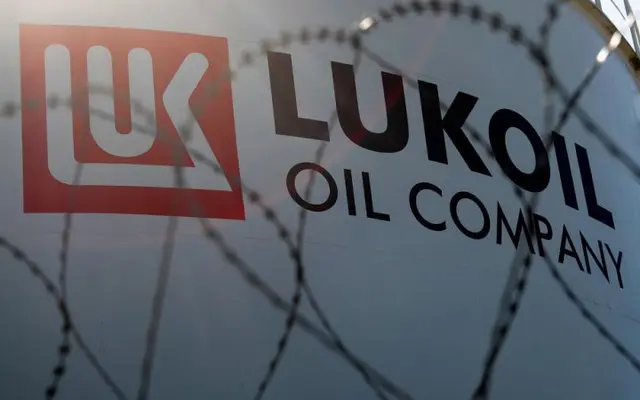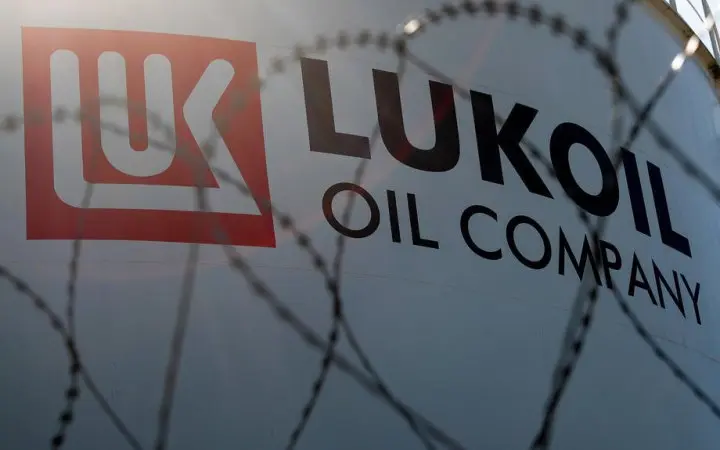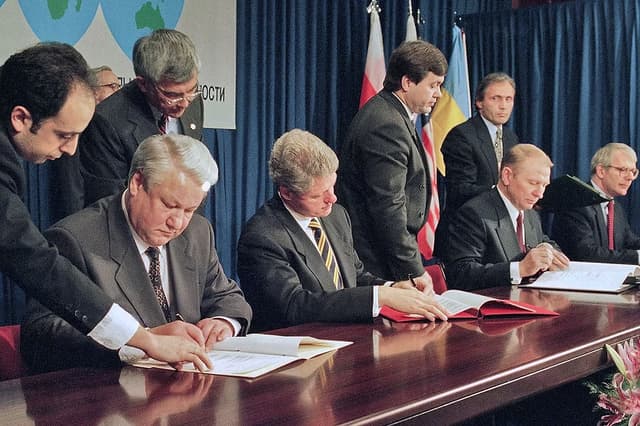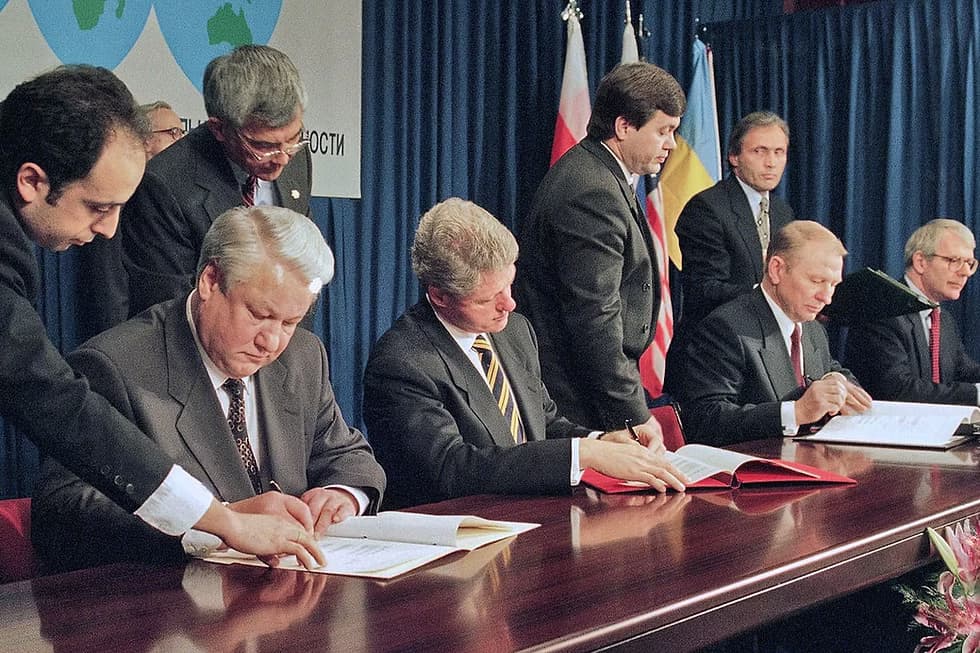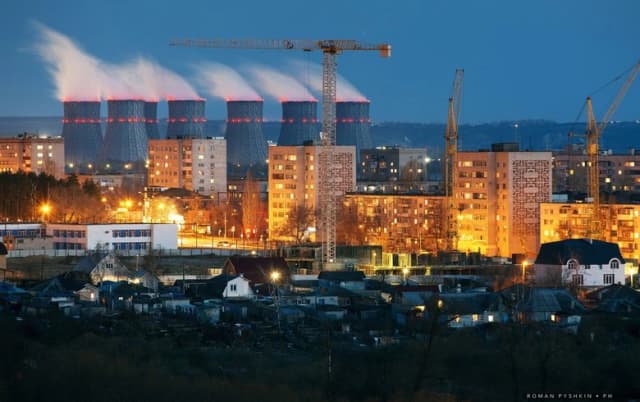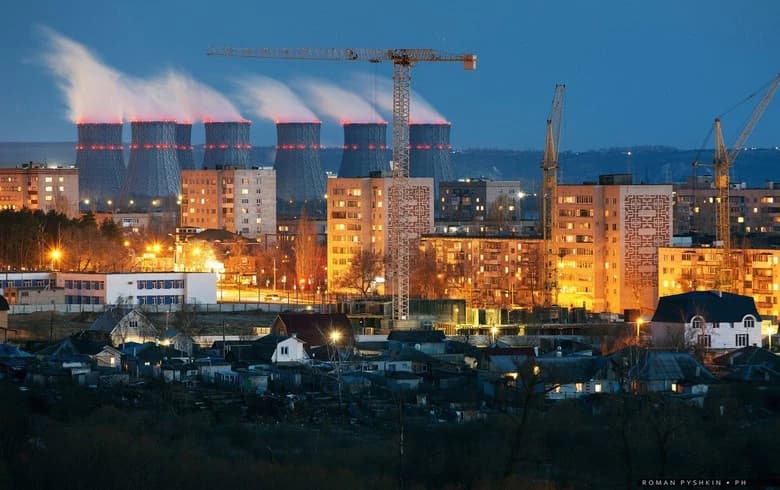Middle East ceasefire. What does it mean for Ukraine and the world?
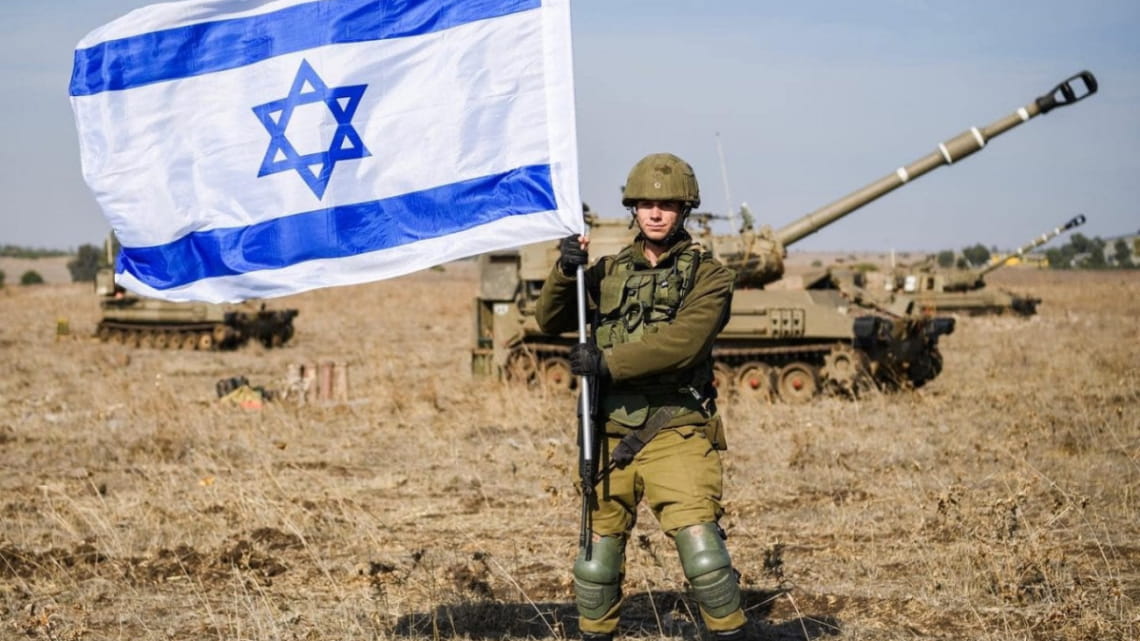 Photo: Israel Defense Forces
Photo: Israel Defense Forces
Is the peace agreement Donald Trump's achievement?
Trump's 20-point plan – is a multilateral initiative by US President Donald Trump, announced in September 2025, aimed at ending the war in Gaza and stabilising the Middle East. The plan calls for an immediate ceasefire, prisoner exchange, disarmament of Hamas, demilitarisation of Gaza, deployment of international forces, transitional rule by Palestinian technocrats under the supervision of the UN (and initially former British Prime Minister Tony Blair and Trump) and Arab partners, massive infrastructure reconstruction, and a path to Palestinian statehood without annexation or occupation by Israel, provided that the security of the State of Israel and the economic development of the region are ensured.
On 9 October 2025, after two years of active hostilities (since 7 October 2023), an agreement was reached to release all 48 Israeli hostages who had spent two years in captivity. Early in the morning of 13 October, the terrorist group handed over the illegally detained live people to the International Committee of the Red Cross (ICRC), which will mediate the fulfilment of obligations between the parties. However, the bodies of 13 hostages remain in Gaza. Israel believes that Hamas is manipulating the situation and does not want to return the bodies of the deceased, while the group, for its part, is demanding the supply of equipment to search for the bodies. Israel is threatening to resume hostilities if the bodies are not returned.
It is worth noting that after the agreement was signed in Egypt on 13 October as part of the first phase of the peace plan settlement, we witnessed a rather surreal scene when an Israeli general hugged the Prime Minister of Qatar (diplomatic relations between the two countries have been sealed since 2009). These events seem incredible, especially considering Israel's strike on 9 September 2025 on the Lektayfia district in Doha, where Hamas leaders had gathered for a meeting.
Interestingly, the day after the agreement was signed, the winner of the Nobel Peace Prize was announced, a title for which Donald Trump was a strong contender. The Nobel Committee decided to award the Nobel Peace Prize to Venezuelan opposition politician Maria Karina Machado, which was met with sharp dissatisfaction in the White House. Despite the US president's loud statements, Trump's peace plan did not become a spontaneous panacea for a ceasefire. The truce, albeit fragile, was achieved primarily through force.
Before the agreement was concluded, the State of Israel launched a large-scale offensive on the city of Gaza and forced 800,000 people to flee by destroying two-thirds of the city. Only then did Donald Trump begin to actively promote the peace agreement. Both sides in the Arab-Israeli conflict were tired of the tension.
The impact of the ceasefire on the Russian-Ukrainian war
The conflictogenicity in the Middle East has a significant impact on the global geopolitical situation, affecting energy markets, international alliances and security.
In general, Russia benefits from the war between Hamas and Israel, because the latter is a recipient of US aid, which distracts American attention from events in Ukraine. An example of this trend was the difficulties Ukraine faced in October 2023, when, due to the Hamas attack and the reorientation of resources to support the State of Israel, a significant part of the aid to it was frozen. In addition, Russia, using humanitarian convoys, is trying to present itself to the Arab world as an alternative to the EU and the US (the ‘rotten West’), which often leads to an ‘ambiguous position’ of Arab countries on the Russian-Ukrainian war. But in reality, this is just a typical attempt to distract the world from its expansion and consolidate its position in the region by forming an ‘axis of evil’ with Iran.
The ceasefire in the Gaza Strip has, first of all, reduced geopolitical risks in the Middle East, which, along with other factors, has contributed to a decline in oil prices, which is critically negative for Russia. A week after the ceasefire began, Brent crude oil prices fell from $65 to nearly $60 per barrel. Russian Urals crude oil is selling at a discount of $10-15. Lower oil prices reduce Russia's revenues, weakening its military machine.
Secondly, a positive outcome could be reduced competition between Israel and Ukraine for American weapons and military aid. For example, Patriot systems were initially prioritised for Israel due to escalation (Iran, Hamas), delaying deliveries to Ukraine. Thus, a de-escalation in the confrontation between Hamas and Israel could free up some American military resources for Ukraine.
Thirdly, Trump's peace plan effectively cancelled an event that was very important for Russia – the planned Russian-Arab summit in Moscow, which was intended to demonstrate Russia's lasting influence in the Middle East and prove that it remains far from isolated. Instead, world leaders gathered for a ‘peace summit’ on Gaza in Egypt – without Russia. Moscow was never expected to play an important role in the peace process in Gaza, but its absence in Egypt emphasises the reality that Russia's influence in the Middle East, which has long been positioned as a counterweight to the West, is fading.
Now that the Arab-Israeli conflict is on hold, Putin needs to ignite a new confrontation. Perhaps that is why he went to Tajikistan and makes no secret of his desire to open his own military base in Afghanistan (Donald Trump has expressed the same desire).
There is a parallel between Trump's 20-point plan for Gaza and Keith Kellogg's plan for Ukraine (a ceasefire along the current lines, forced negotiations, conditional assistance to Kyiv in exchange for dialogue, partial lifting of sanctions against Russia) in the strategy of ‘peace through strength’: pressure on the aggressor through demilitarisation, incentives for negotiations, and the role of mediators for fragile stabilisation with economic revival. Trump cites the success in Gaza as a model for Ukraine, where both plans prioritise a rapid end to hostilities.
It is interesting that Europeans, in cooperation with Ukraine, have developed a 12-point ‘peace plan’ to resolve the Russian-Ukrainian war, similar to Trump's 20-point plan for Gaza. The plan was initiated by Finland, and in recent weeks the idea has been spreading across European capitals, although it has not gained official support from any country yet. According to Axios, British Prime Minister Keir Starmer has offered to cooperate with the US to develop a similar plan for Ukraine. The document (which is not a draft peace agreement) envisages that the ceasefire should begin ‘24 hours after the parties accept this plan’ and that the line of contact ‘will be frozen at the point where it stands at the start of the ceasefire’. It also proposes, for example, the creation of a ‘Peace Council’ chaired by Trump during the ceasefire phase to oversee the implementation of the final peace plan – an idea apparently borrowed from the 20-point peace plan for Gaza.
Ukraine should take into account that Donald Trump wants to be the ‘main hero’ in conflict resolution. This is evidenced by the repeated mention of his name in the Gaza agreement. It is logical that the US president should be given this opportunity, provided that the results of his work are fruitful for Ukraine.
Consequences of the agreement
Neither Israel nor Hamas achieved complete victory on the battlefield. The IDF did not capture all 42 km of territory, and Hamas is currently reprocessing unexploded IDF ammunition and building tunnels. The terrorist group is now the only authority in Gaza, and Trump, after his loud statements about his mission, has already lost interest in the conflict.
The IDF has left 47% of the captured territories in Gaza. Despite all the discussions and Egypt's plan, according to which the ‘two-state’ principle was to be applied and peacekeeping forces were to be deployed in the West Bank and Gaza, as well as a temporary Gaza Management Committee created, no temporary administration has yet been established. Accordingly, slightly less than half of the Gaza Strip is coming under the control of Hamas, which leaves room for a potential escalation of the conflict in the future, as the radicals do not recognise Israel as a state and are raising new generations in the spirit of anti-Semitism. That is why the IDF reserves the right to launch a rapid intervention in the event of new provocations.
The text of the agreement also mentions the formation of a working group consisting of representatives from the United States, Qatar, Egypt, Turkey and other countries to monitor compliance with the terms. Egypt and Jordan, which were supposed to lead the coalition, are viewing this initiative with caution. Interestingly, only Italy has expressed its willingness to send peacekeepers to the Gaza Strip.
On 13 October 2025, a global summit was held in Sharm el-Sheikh with the participation of more than 20 countries (Turkey, France, Germany, Britain, Italy, Canada, Jordan, Qatar and others). Iran declined the invitation, indicating its continued desire to control the situation in the region using its proxies. The fact that the summit took place without the participation of delegates from the State of Israel and Hamas indicates deep mistrust between the parties and the international community's desire to isolate radical forces.
Of course, without the parties to the conflict, a final agreement is impossible, but the growing role of mediators (Qatar, Egypt and Jordan) who have contacts with Hamas is clearly visible. For their part, Western states are seeking to offer a ‘humanitarian road map’: a ceasefire, access to aid, and gradual control of Gaza by the Palestinian Authority. Europe is interested in these actions because, against the backdrop of US statements about cutting funding for European defence capabilities and Russia's violation of the airspace of a number of European states, it is important for Europe to focus on ensuring its own security.
The region has been given a much-needed pause for humanitarian aid and diplomacy, although this does not change the fundamental drivers of the conflict. All Arab states have suffered from Palestinian radicalism at one time or another, paying a high price for sheltering them, so they all want stability in Gaza.
Egypt has strengthened its role as a mediator through humanitarian aid and active diplomatic engagement. Lebanon has seen a reduction in tensions on its northern front, although the risk of local tensions due to potential conflicts between Hezbollah and Israel remains. No matter how hard the Lebanese army tries, in accordance with the terms of the truce with Israel, Iran is currently rebuilding Hezbollah's power by providing it with drones, modern communications equipment, and plans to supply it with Katyusha rockets in the future. A new clash is inevitable, as Hezbollah has begun the largest restructuring in its history since the last war with Israel.
The Arab-Israeli conflict is beneficial to Iran, as it allows the country to manipulate the oil market and prevent reconciliation between the State of Israel and other Arab states. Iran will likely continue to try to use its proxies to maintain its role in the region. It was recently revealed that China has provided Tehran with ‘new defensive and offensive capabilities.’ In particular, an advanced military navigation system and remote sensing capabilities.
Interestingly, Qatar has benefited from the Palestinian-Israeli confrontation and, despite its financial and informational support for Hamas, it has managed to make itself indispensable by maintaining contacts with all players: Iran, other Gulf monarchies, Hamas, the Taliban, the Muslim Brotherhood and Hezbollah
Political forecast on the Palestinian issue
As is well known, there are three scenarios for resolving the Palestinian issue in the future: the formation of a peacekeeping mission based on the League of Arab States (LAS) to maintain order in the Gaza Strip; full annexation of the Gaza Strip by Israel; and the creation of a confederation of Israel and Palestine.
The Palestinian question is extremely difficult to resolve. Immediately after the announcement of the truce, Hamas began purges in Gaza, killing all those whom the group considered to be ‘collaborators.’ A particularly striking example was the gang of Yasser Abu Shabab and the Al-Astal clan, who openly opposed Hamas. So, as has become clear, in practice, Trump's thesis about depriving Hamas of any governing power simply does not work. Internal conflict in the Gaza Strip continues to undermine US efforts.
On 19 October, in eastern Rafah, Hamas violated the ceasefire by attacking the Israeli army. According to Hamas, the attack was against Abu Shabab collaborationists (the State of Israel used them to implement the principle of ‘divide and rule’), and the IDF crossed the demarcation line to protect its proxies. The US did not recognise that Hamas was the first to violate the agreement.
After the latest violations of the ceasefire by Hamas, the US allowed Israel to move the ‘yellow line’ further west. Israel is currently persecuting Palestinians in Hebron in the West Bank (the city is home to about 900 Israeli settlers under the protection of the IDF) and carrying out air strikes on Gaza.
At the end of October, the Knesset passed a declaration on Israel's sovereignty over the West Bank, initiating the official legislative process during the visit of US Vice President Jay D. Vance and US Secretary of State Marco Rubio. There is a threat of ‘imposing sovereignty’ and undermining efforts to create a Palestinian state. Netanyahu's Likud party opposed the vote, fearing that it would damage relations with the US. It is clear that Netanyahu is afraid of spoiling his cooperation with Trump and values his position, trying to avoid the dock, so he himself is interested in prolonging the conflict. In addition, Netanyahu's government previously allowed Qatar to finance Hamas in order to weaken the Palestinian Authority (Fatah) and prevent the creation of a strong unified Palestinian government.
It is likely that the truce in Gaza will not be long-lasting. Donald Trump will use the success for diplomacy, but the demilitarisation of Gaza is impossible without a mechanism of coercion involving other states, so the peace plan is under threat of repeated isolated incidents.
The analytical article was prepared by Vladyslava Sen, an intern at the Resurgam think tank
You may be interested
